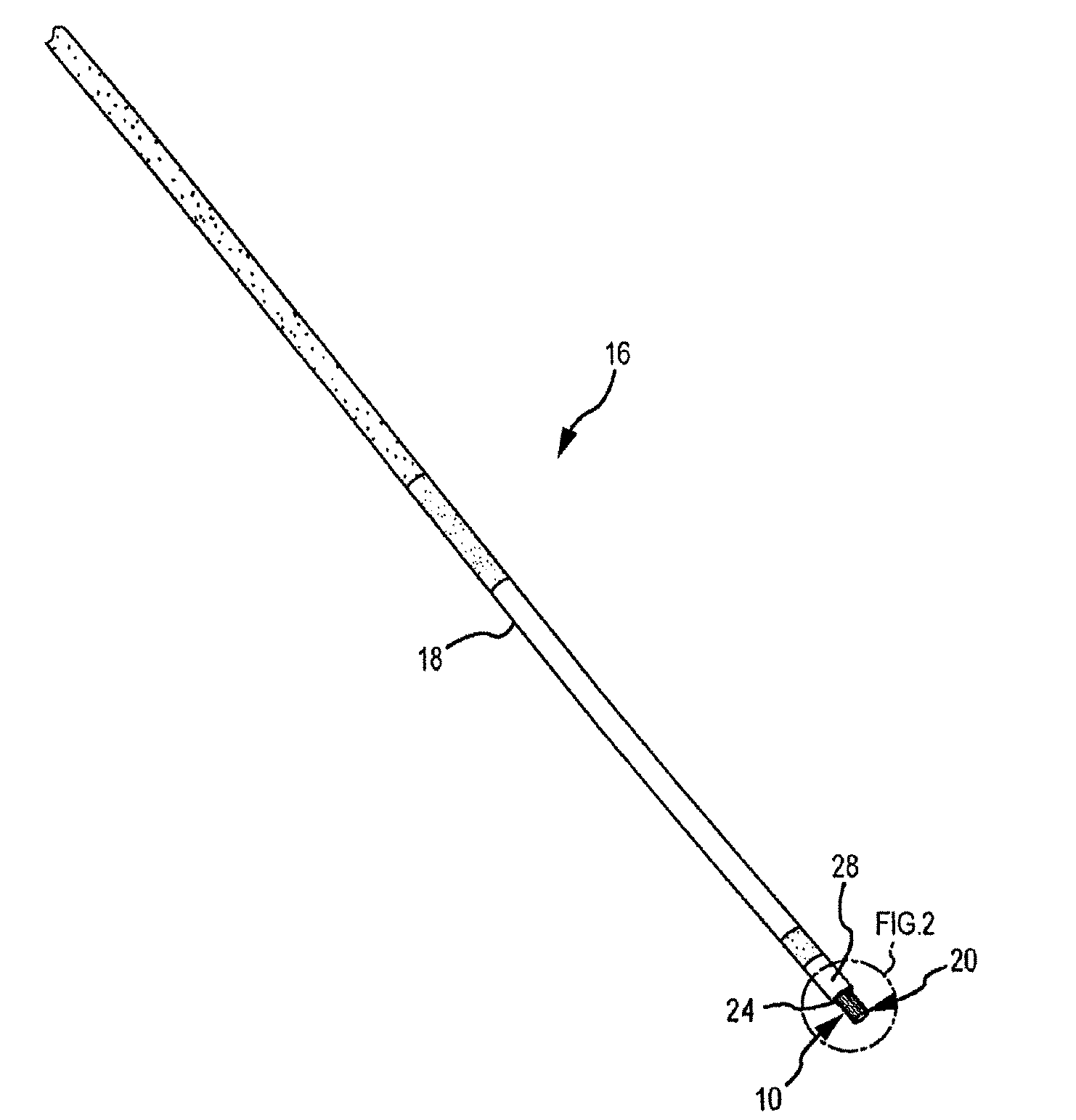Conforming Electrode
a technology of conduction electrodes and electrodes, applied in the field of conduction electrodes, can solve the problems of large temperature gradients and hot spots, and many difficulties, so as to prevent undesirable medical consequences and reduce the formation of undesirable coagulation and surface tissue charring
- Summary
- Abstract
- Description
- Claims
- Application Information
AI Technical Summary
Benefits of technology
Problems solved by technology
Method used
Image
Examples
Embodiment Construction
[0037]FIG. 1 is an isometric view of one embodiment of a catheter 16 having a conforming electrode 10 according to the present teachings. As depicted in this figure, the catheter comprises a catheter shaft with an outer sheath 18. In the embodiment depicted in FIG. 1, the outer sheath is formed from sections of different material (e.g., in the embodiment depicted FIG. 1, five different sections comprise the outer sheath). These sections of different material enable the catheter 16 to have, for example, different mechanical properties (e.g., flexibility) at different locations along the catheter shaft. The outer sheath 18 may or may not comprise these sections of different material depending upon the intended application for the catheter. Although the outer sheath 18 depicted in FIG. 1 has a circular cross section, the cross section of the outer sheath may be other than circular.
[0038]As also shown in FIGS. 1-3, the conforming electrode 10, which comprises an exposed portion 20 and a...
PUM
 Login to View More
Login to View More Abstract
Description
Claims
Application Information
 Login to View More
Login to View More - R&D
- Intellectual Property
- Life Sciences
- Materials
- Tech Scout
- Unparalleled Data Quality
- Higher Quality Content
- 60% Fewer Hallucinations
Browse by: Latest US Patents, China's latest patents, Technical Efficacy Thesaurus, Application Domain, Technology Topic, Popular Technical Reports.
© 2025 PatSnap. All rights reserved.Legal|Privacy policy|Modern Slavery Act Transparency Statement|Sitemap|About US| Contact US: help@patsnap.com



